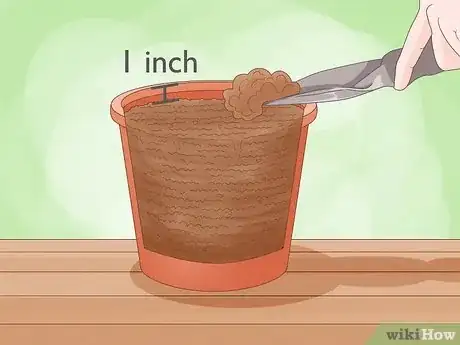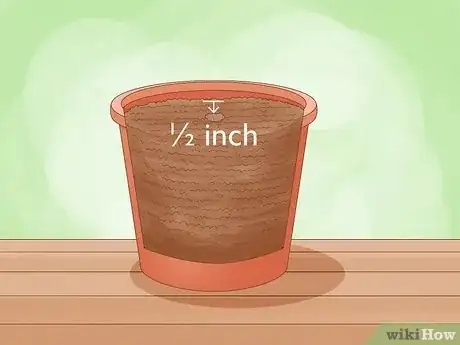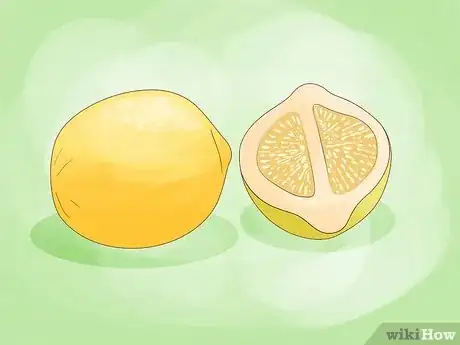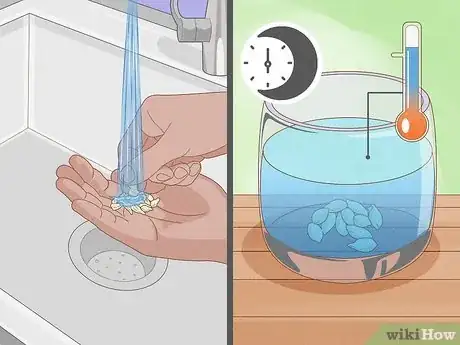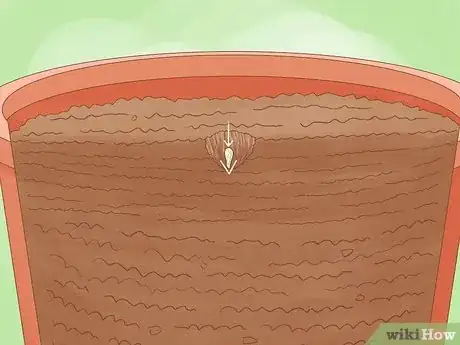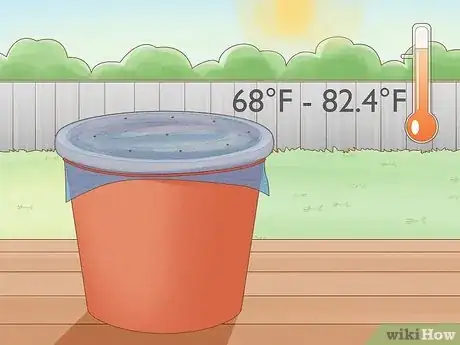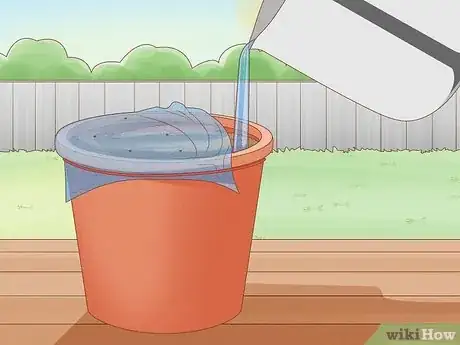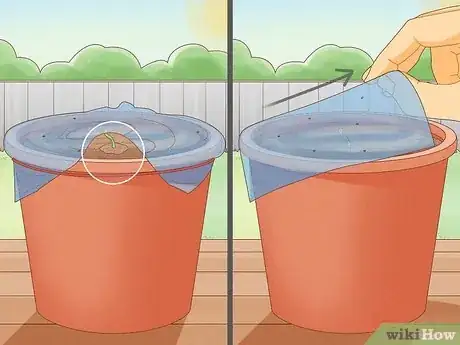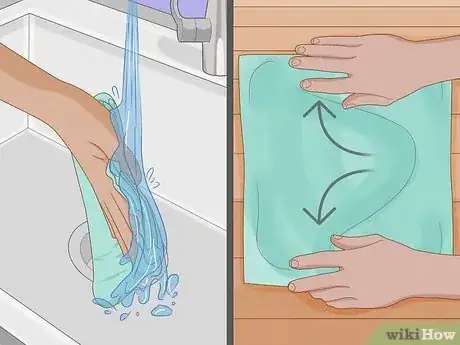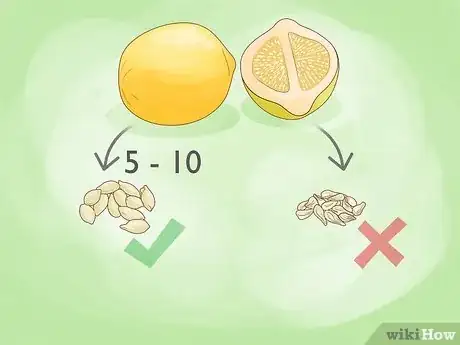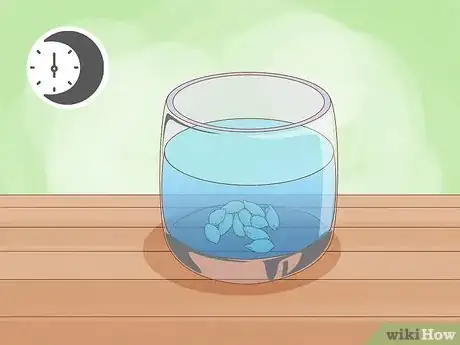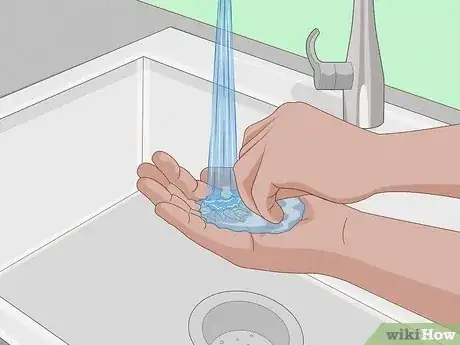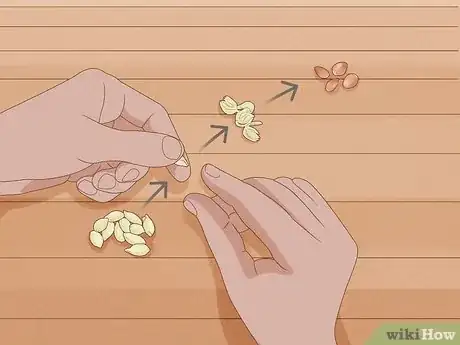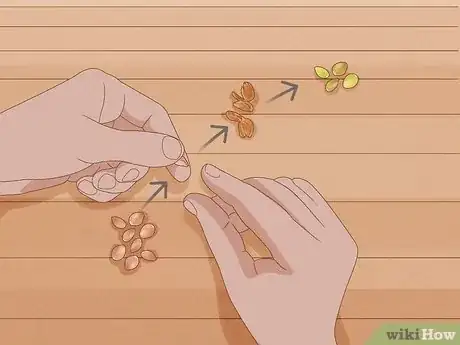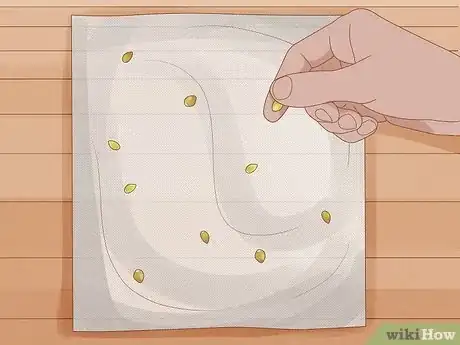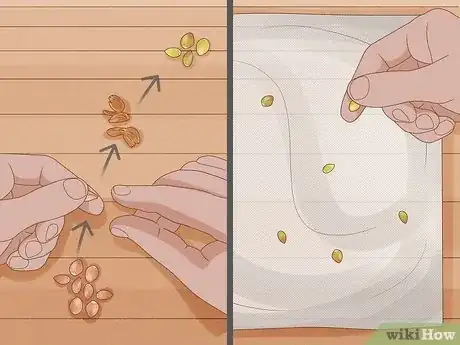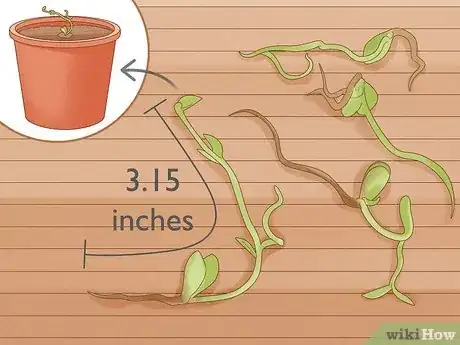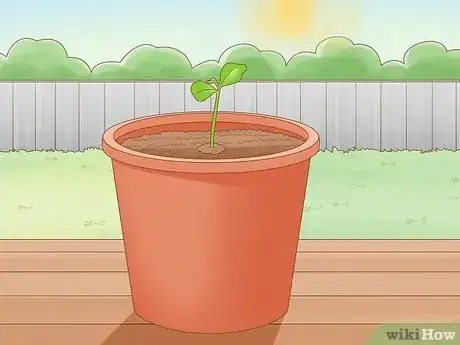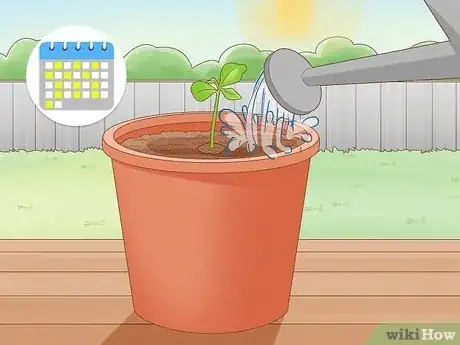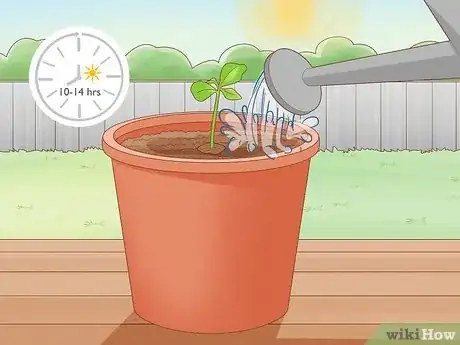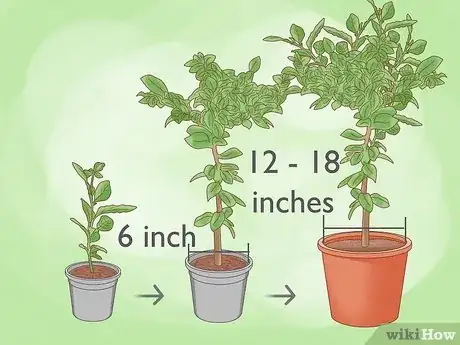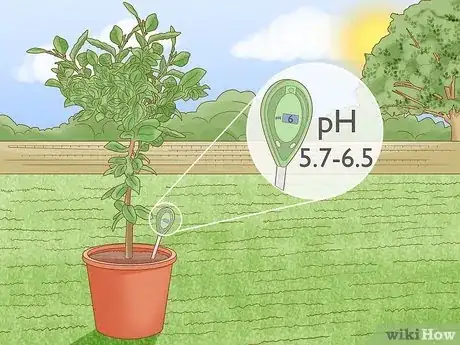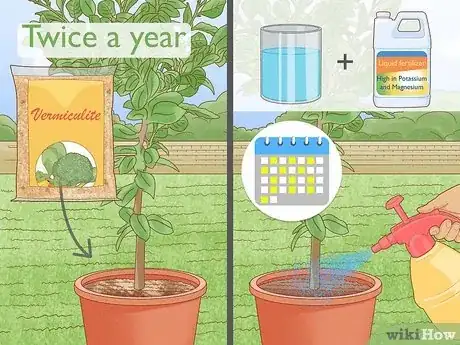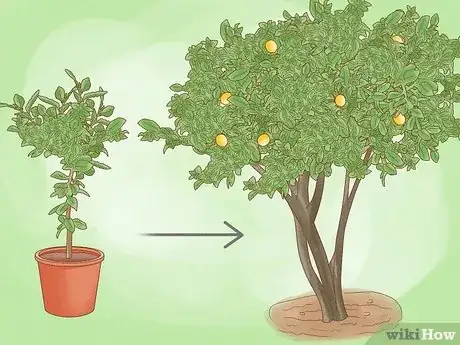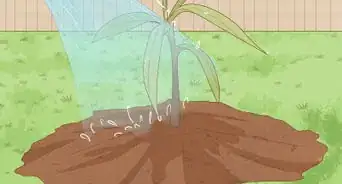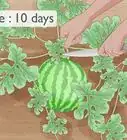This article was co-authored by Andrew Carberry, MPH. Andrew Carberry is a Food Systems Expert and the Senior Program Associate at the Wallace Centere at Winrock International in Little Rock, Arkansas. He has worked in food systems since 2008 and has experience working on farm-to-school projects, food safety programs, and working with local and state coalitions in Arkansas. He is a graduate of the College of William and Mary and holds a Masters degree in public health and nutrition from the University of Tennessee.
There are 10 references cited in this article, which can be found at the bottom of the page.
wikiHow marks an article as reader-approved once it receives enough positive feedback. This article has 26 testimonials from our readers, earning it our reader-approved status.
This article has been viewed 882,435 times.
Lemons can be easily grown from seed and are a wonderful looking plant. You can propagate the seeds directly in soil, or in a plastic resealable bag with a damp paper towel. This article will show you how to plant lemon seeds using both methods. It will also give you tips on how to choose the best lemon seed, and how to take care of your seedling.
Steps
Planting Seeds in Soil
-
1Prepare your potting soil in a separate bucket. Pour some soil into a large bucket and add water to it until it is damp. Mix the soil with your hand or a trowel until it is evenly damp. Do not allow the soil to become soggy, or the seeds will rot. You will need a well-draining soil. Lemon trees love water, but they hate to sit in it.
-
2Choose a small pot with drainage holes. The pot should be about 3 to 4 inches (7.62 to 10.16 centimeters) wide, and 5 to 6 inches (12.7 to 15.24 centimeters) deep.[3] [4] This pot will be enough for one seed. Some people like to plant several seeds in one pot at a time. If you want to do this too, choose a larger pot.
- Your pot must have drainage holes. If your pot does not have any, you will need to drill some.
Advertisement -
3Fill the pot with soil. Stop when the top of the soil is about 1 inch (2.54 centimeters) from the rim.[5]
-
4Make a ½ inch (1.27 centimeter) deep hole in the soil. You can do this using your finger or a pencil.
-
5Choose a plump-looking seed from a lemon. It may be necessary to use an organic lemon because seeds from a non-organic lemon may not sprout. Also, avoid taking any seeds that look too tiny (like a grain of rice) or that look shriveled (like a raisin). These seeds either won't sprout or won't grow into healthy seedlings.
- Consider planting 5 to 10 lemon seeds at one time, in case some of the seeds don't sprout or don't make it past seedling-hood.
- Keep in mind that trees that come from seeds are not identical to the parent tree that they came from. Sometimes, the fruit that the new saplings produce is of a lesser quality. Other times, they do not produce edible fruit at all. This does not prevent the young tree from being visually pleasing. Keep this in mind when growing your tree.[6]
-
6Wash the seed to get rid of the slimy coating. You can do this by washing the lemon seed or by sucking on it until the coating is gone. This is important. The gel-like coating contains sugars, which can cause the seed to rot.[7]
- Consider leaving the lemon seeds in a cup of warm water overnight. This will help them sprout faster.[8]
-
7Drop the seed into the hole and cover it up. Make sure that the pointy tip is pointing downward into the soil, and the rounded part is pointing upward towards you. The roots will come out of the pointy part.[9]
-
8Cover the pot with a piece of breathable plastic to trap warmth and moisture. Begin by placing a sheet of clear plastic cling wrap over the pot. Wrap a rubber band around the plastic wrap to secure it to the pot. Poke a few holes into the plastic wrap. You can use a pencil, a toothpick, or even a fork. These holes will allow the plant to breathe.
-
9Place the pot in a warm location. You can place the pot in a sunny location too, but sunlight is not vital at this point. In fact, too much sunlight can "cook" the young, delicate seedlings. You should see a sprout emerge in about two weeks.[10]
- The ideal temperature is between 68°F and 82.4°F (20°C and 28°C).[11]
-
10Water the soil when you see it become dry. The plastic wrap should trap the moisture, and the condensation should rain down onto the soil, making it damp again. In very dry environments, this may not happen. If you see the soil start to become dry, remove the plastic wrap and water the plant. Be sure to re-cover the pot with the plastic wrap when you are done watering.
-
11Remove the plastic covering once the sprout appears and transfer the pot to a warm, sunny location. Remember to keep the soil damp, but do not let it become soggy. Click here to learn how to take care of your seedling.
Sprouting Seeds in a Plastic Bag
-
1Dampen a paper towel and smooth it out on a flat surface. Start by soaking a paper towel with water, then squeeze out the excess water. Place the damp paper towel on a flat surface and smooth out any wrinkles.[12]
- The paper towel should fit inside your plastic zippered or resealable bag. If the paper towel is too big, then fold it in half or into quarters.
-
2Pick out 5 to 10 plump seeds from an organic lemon. Seeds from non-organic lemons will not always sprout, so it is a good idea to prepare at least 10 seeds to ensure you have a healthy selection.[13] Look for seeds that are large and plump. Skip the ones that look shriveled or like tiny, white specks. These will either not sprout, or they won't grow into a healthy seedling.[14]
- Even if you only plan on growing one lemon tree, it is a good idea to start with several seeds. Not all seeds will sprout, and not all seedlings will survive.
- Take care to not crowd the seeds. They should be at least three inches apart, so that they have room for their roots as they germinate.
-
3Consider keeping the seeds in a cup of water overnight. This will keep the seeds from drying out while you work. The seeds must stay moist. If they dry out, they will not sprout.
-
4Clean the gel-like coating off of each seed. You can do this by rinsing the seeds in cool water, or by sucking on them. This gel is filled with sugars, which can encourage mold and bacteria growth.
-
5You can also peel the other white layer off to reveal a brown-colored seed. Start peeling from the pointy end. You can use your finger nail or a craft knife to nick the tip, and then peel the outer shell down. This will make it easier for the seeds to sprout and speed up the process, but is not necessary for germination to occur.
-
6Peel the brown seed cover off as well. You may notice that your seed is covered with a thin, brown film. Use your fingernail to scratch this coating off.
-
7Place the seeds onto the damp paper towel. Try to spread the seeds out as evenly as you can, so that the roots don't become tangled when they sprout.
-
8Repeat the peeling process for the rest of the seeds and place them down onto the towel. Once the seeds are on the paper towel, they should stay damp. If you notice them starting to get dry out, consider covering the paper towel with another damp paper towel, or folding the first one overtop of them.
-
9Slip the paper towel into a plastic zippered or resealable bag, and close the bag tightly. Don't use a plastic grocery bag. You want the bag to be zippered or resealable; this will help trap the moisture and retain heat. Your seeds will need both in order to sprout.
-
10Keep the plastic bag in a dark, warm location until the seeds sprout.[15] Keep the temperature between 68 and 72 degrees Fahrenheit. It will take one to two weeks. Some seedlings will need up to three weeks to sprout.
-
11Transplant the seedlings when the tails are about 3.15 inches (8 centimeters) long.[16] Make a shallow hole (a half inch deep) in a pot of damp, well-drained soil, and tuck the seedling, tail-side-down into the hole. Gently pat the soil around the seedling.
-
12Move the pot to a warm, sunny location. Remember to water the plant and to keep the soil damp; do not allow the soil to become soggy or dry. Click here to learn how to take care of your seedling.
Taking Care of Your Seedling
-
1Water your plant regularly, about 2 or 3 times per week. When the seedling has 4 developed leaves, let the surface of the soil become dry before you water again. Don't let the soil dry out completely, however; it should be moist if you stick your finger into it.[17]
-
2Make sure that it gets enough sunlight. Lemon trees require at least eight hours of sunlight. Seedlings will require 10 to 14 hours.[18] You may have to place a grow light next to your tree to ensure that it gets enough sunlight. You can purchase grow lights from gardening shops and nurseries.
-
3Know when to transplant your seedling. Eventually, your seedling will outgrow its pot. When the seedling reaches 1 year old, transfer it to a 6 inch (15.24 centimeter) wide pot. Eventually, you will need to move your plant to a pot that is 12 to 18 inches (30.48 to 45.72 centimeters) wide and 10 to 16 inches (25.4 to 40.64 centimeters) deep.[19] [20]
- A good rule of thumb to determine when it's time to transplant is to look under the pot. If you can see roots through the drainage holes, it is time for a new, bigger pot.
-
4Maintain the soil pH level. Lemon trees like soil that is slightly acidic. The pH should be between 5.7 and 6.5. You can measure this with a pH testing kit, which you can purchase from a gardening shop or a nursery. A good way to lower the acidity of the soil is by watering the plant once a month with some cold black coffee or tea (with no milk or sugar added).[21] However, make sure that you continue to monitor the pH until it has reached the ideal range.
-
5Remember to provide your tree with proper nutrients so that it grows healthy and strong. You can either dig a trench around the tree and fill it with dry compost, or you can water it with a water soluble fertilizer. Here are some ways in which you can provide your tree with the nutrition it needs:
- Fertilize your lemon tree twice a year with an organic fertilizer, such as compost or vermicompost.[22]
- Water your plant every 2 to 4 weeks with a water soluble fertilizer. It should be high in potassium and magnesium.[23]
- If your tree is going to stay indoors, purchase a general indoor plant fertilizer. It should contain micronutrients.[24]
- Water your tree once a month with a solution made from 1 tablespoon of Epsom salts and ½ gallon (1.89 liters) of water.[25] If your tree is still very small, you might not need so much water. Instead, water the plant as much as you need to, then save the leftover water for the next month.
-
6Understand that it will take some time before your tree can bear fruit. Some lemon trees will produce fruit in as little as five years. Others will requires as many as 15 years.
- If you have an indoor lemon tree, you'll also need to pollinate it by hand before it will bear fruit. Bees typically take care of this when your lemon tree is planted outside, though.
Expert Q&A
-
QuestionDo lemon trees grow in California?
 Andrew Carberry, MPHAndrew Carberry is a Food Systems Expert and the Senior Program Associate at the Wallace Centere at Winrock International in Little Rock, Arkansas. He has worked in food systems since 2008 and has experience working on farm-to-school projects, food safety programs, and working with local and state coalitions in Arkansas. He is a graduate of the College of William and Mary and holds a Masters degree in public health and nutrition from the University of Tennessee.
Andrew Carberry, MPHAndrew Carberry is a Food Systems Expert and the Senior Program Associate at the Wallace Centere at Winrock International in Little Rock, Arkansas. He has worked in food systems since 2008 and has experience working on farm-to-school projects, food safety programs, and working with local and state coalitions in Arkansas. He is a graduate of the College of William and Mary and holds a Masters degree in public health and nutrition from the University of Tennessee.
Food Systems Expert Yes, lemon trees grow in USDA hardiness Zones 9-11, where the winters don't get too cold.
Yes, lemon trees grow in USDA hardiness Zones 9-11, where the winters don't get too cold. -
QuestionWhich type of climate do they need?
 Community AnswerCitrus trees generally need a high humidity, ideally with a minimum of around 50-60%. Lemons are generally hardy down to 10°C. Mature trees can stand occasional, brief frosts but still need protection. In terms of moisture, citrus trees should not be over-watered as this can kill the plant. As for light, at least 5 to 6 hours is required for survival, but 8 to12 hours would be better.
Community AnswerCitrus trees generally need a high humidity, ideally with a minimum of around 50-60%. Lemons are generally hardy down to 10°C. Mature trees can stand occasional, brief frosts but still need protection. In terms of moisture, citrus trees should not be over-watered as this can kill the plant. As for light, at least 5 to 6 hours is required for survival, but 8 to12 hours would be better. -
QuestionShould I be concerned that a wispy film of mold has formed on the surface of the soil around my lemon seedlings?
 Community AnswerThis could be a sign of over-watering, which is a cause for concern. Let the soil dry out between waterings. If the mold gets worse, try moving the seedlings into individual pots that are only a little bit wider and deeper than their root balls.
Community AnswerThis could be a sign of over-watering, which is a cause for concern. Let the soil dry out between waterings. If the mold gets worse, try moving the seedlings into individual pots that are only a little bit wider and deeper than their root balls.
Warnings
- Never leave the compost wet as it rots the seed.⧼thumbs_response⧽
Things You'll Need
Planting Seeds in Soil
- Soil
- Water
- Bucket
- 3 to 4 inch (7.62 to 10.16 centimeters) wide pot
- Lemon seeds
- Plastic wrap
- Rubber band
- Cup of warm water (optional)
Sprouting Seeds in a Plastic Bag
- 5 to 10 seeds from an organic lemon
- 1 damp paper towel
- 1 plastic zippered/resealable bag
References
- ↑ http://www.gardeningknowhow.com/edible/fruits/lemons/propagating-lemon-seeds.htm
- ↑ https://growingwildceeds.wordpress.com/2012/03/10/how-to-grow-a-lemon-tree-from-seed/
- ↑ http://davesgarden.com/guides/articles/view/1797
- ↑ https://growingwildceeds.wordpress.com/2012/03/10/how-to-grow-a-lemon-tree-from-seed/
- ↑ http://www.healthyfoodhouse.com/how-to-grow-a-lemon-tree-from-seed-easily-in-your-own-home/
- ↑ http://www.gardeningknowhow.com/edible/fruits/lemons/propagating-lemon-seeds.htm
- ↑ http://www.gardeningknowhow.com/edible/fruits/lemons/propagating-lemon-seeds.htm
- ↑ http://www.weekendgardener.net/tree-information/how.to.grow.and.care.for.a.lemon.tree.htm
- ↑ http://www.underwoodgardens.com/slide-gardening-tips-and-tricks/seed-orientation-planting-improves-germination/
- ↑ http://www.healthyfoodhouse.com/how-to-grow-a-lemon-tree-from-seed-easily-in-your-own-home/
- ↑ http://joybileefarm.com/meyer-lemon-tree/
- ↑ http://www.kitchenbutterfly.com/2013/04/12/how-to-grow-meyer-lemons-from-seed/
- ↑ http://www.healthyfoodhouse.com/how-to-grow-a-lemon-tree-from-seed-easily-in-your-own-home/
- ↑ http://davesgarden.com/guides/articles/view/1797
- ↑ http://mikesbackyardnursery.com/2015/03/how-to-grow-a-citrus-tree-from-seed/
- ↑ http://www.kitchenbutterfly.com/2013/04/12/how-to-grow-meyer-lemons-from-seed/
- ↑ http://joybileefarm.com/meyer-lemon-tree/
- ↑ https://growingwildceeds.wordpress.com/2012/03/10/how-to-grow-a-lemon-tree-from-seed/
- ↑ http://joybileefarm.com/meyer-lemon-tree/
- ↑ https://growingwildceeds.wordpress.com/2012/03/10/how-to-grow-a-lemon-tree-from-seed/
- ↑ http://joybileefarm.com/meyer-lemon-tree/
- ↑ https://growingwildceeds.wordpress.com/2012/03/10/how-to-grow-a-lemon-tree-from-seed/
- ↑ http://www.gardeningknowhow.com/edible/fruits/lemons/propagating-lemon-seeds.htm
- ↑ http://davesgarden.com/guides/articles/view/1797
- ↑ http://joybileefarm.com/meyer-lemon-tree/
- ↑ http://davesgarden.com/guides/articles/view/1797
- ↑ http://davesgarden.com/guides/articles/view/1797
- ↑ http://joybileefarm.com/meyer-lemon-tree/
- Huws Nursery, How to Grow a Lemon Tree from Seed
About This Article
To plant a lemon seed, first cut open a plump, juicy lemon and extract the seeds from the pulp. Choose an undamaged seed and rinse it under cool water. Then, find a small pot with drainage holes on the bottom and fill it with pasteurized soil mix. Push your seed ½ inch (1 cm) below the surface. Lightly moisten the soil with lukewarm water and cover the top of the pot with plastic wrap to help the soil retain its moisture. Place the pot in a warm spot that gets indirect sunlight. Lightly water your lemon seed every day to keep the soil moist but not soaked. Once seedlings appear, move the pot into direct sunlight and take the plastic wrap off. Transfer the seedling to a large pot or well-draining area in your yard when the first leaves appear. If possible, do this in the spring right before the growing season. Keep your lemon tree indoors if your local temperature ever drops below 45°F (7°C). Water the plant as needed to keep the soil moist, but not soaked. Fertilize the soil once a month between April and August with a water-soluble fertilizer that’s high in potassium and nitrogen to encourage growth. Keep reading to learn how to sprout seeds in a plastic bag!


